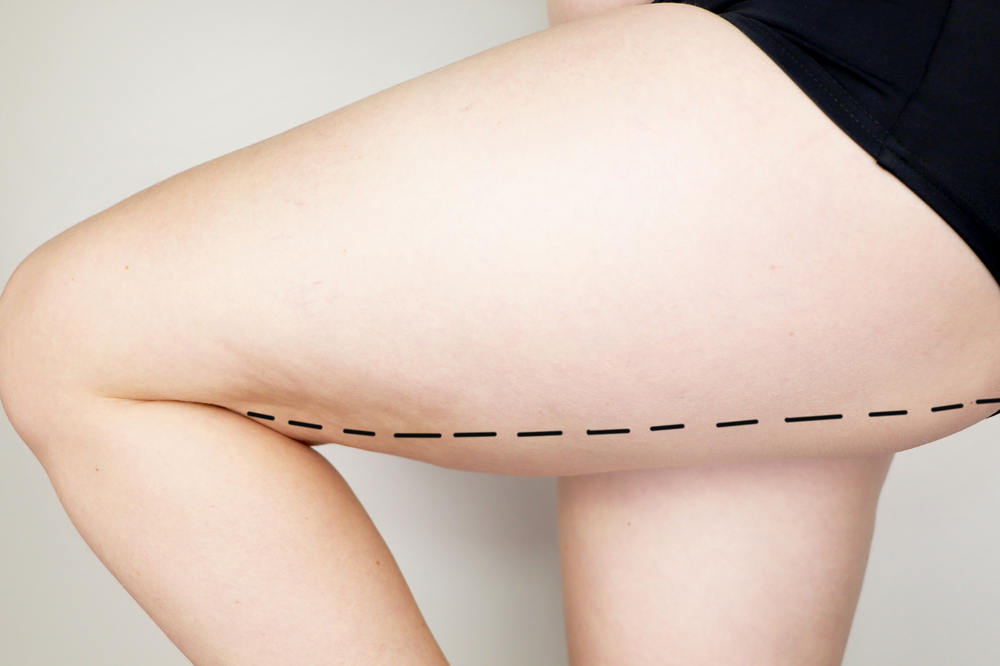Do you feel self-conscious about your thighs due to excess skin following weight loss? Do you have loose, sagging skin that you wish could be tightened effectively? If so, a thigh lift at eSSe Plastic Surgery in Fort Lauderdale, FL may be right for you. Today, we’re taking a look at some of the most frequently asked questions about this procedure, including how long the results will last and how soon the results become apparent.
How Long Does a Thigh Lift Last?
Thigh lift results usually last for five to 10 years. However, the lifestyle choices you make post-op significantly affect how long your results will last. Skin sagging is a natural side effect of the aging process. The older you become, the less collagen, HA, and elastin your skin produces. As a result, your skin starts to sag significantly. The better you take care of the health of your skin and collagen, the longer your results will last.
Additionally, your results will last longer if you do a decent job of maintaining your weight after your procedure. In many cases, this procedure is used to remove excess skin that resulted from significant weight loss. If you gain and subsequently lose a lot of weight post-op, there is a chance that you will be left with excess once again .
How Else Can I Extend the Longevity of My Results?
You will also remain satisfied with the results of your procedure for longer if you exercise regularly. Sometimes, the thigh muscles themselves are improved upon to achieve the desired contours. If you don’t exercise, you may find that your thigh muscles atrophy, and the appearance of your thighs becomes dissatisfactory once more.
How Quickly Will I Be Able to See My Ideal Results?
You will be able to see an improvement in the appearance of your thighs as soon as your procedure is over, but it can take a few weeks to see the final results of your procedure. To see your final results as quickly as possible, you need to make sure that you drink plenty of water, eat nutritiously, and get lots of rest.
Ideally, you should be sleeping for no fewer than nine hours, and you should do your best to avoid setting any alarms. Let your body tell you it is done resting. Regarding your water intake, you should aim to consume at least three quarters of a gallon of water from such sources as tap water, soup, produce, and tea. Regarding your diet, you should aim to eat half of your body weight in grams of protein daily and get your RDI of essential nutrients.
How Much Time Will I Have to Take Off From Work for My Recovery?
You should anticipate taking around seven to 10 days off from work to recover from your thigh lift. How long you will need to take off from work depends on several factors, including the scope of your upper leg lift and how well you care for yourself after your procedure. For example, your recovery will be shorter if you opt for a mini-upper leg lift, rather than a full upper leg lift.
What Should I Wear After My Procedure?
During the first 28 days following your thigh lift, you must wear compression garments to help ensure your recovery goes as smoothly as possible. You may remove these garments to shower, but you must wear them at all other times. It doesn’t matter whether you are sleeping or awake. If you don’t wear your compression garments at all times but bathing, your incisions will take longer to heal than they should.
In addition to wearing compression garments for a month, you can speed up your recovery significantly by walking regularly. It is crucial that you get plenty of rest, but it is also important that you support your cardiovascular system during your recovery process. This is because your cardiovascular system is responsible for, among other functions, delivering nutrients to your skin, so it can heal itself.
How Often Should I Walk?
Once you feel up to exercise, you should start walking around your house. Take breaks whenever you hear your body telling you that you need to rest. If you don’t feel the need to rest, you can benefit significantly from walking for 30 minutes in a row.
Can I Drive After My Procedure?
No, you may not drive after your procedure. Depending on your health and the scope of your procedure, you may receive general anesthesia to keep you both calm and pain-free throughout the entire upper leg lift. If you don’t receive general anesthesia, you will be administered sedation and a local anesthetic. Regardless, it is not safe to drive after receiving either sedation or general anesthesia due to the drug’s affect on your reaction time.
You should also be aware that people who undergo an upper leg lift should not drive for three weeks post-op. If you are not taking prescription analgesics that affect your reaction time, it may be safe for you to drive. However, you should still strongly consider not driving for three weeks. Also, you should keep in mind that you should not sit during the first two weeks post-op.
Can I Lift Weights After My Procedure?
No, you may not lift weights after your procedure. Even though you may feel up to going to work after just a week resting at home, you need to focus on healing as much as possible for the first 42 days following your procedure. At this point, you can start ramping up your exercise routine a bit, but it may take you two months before you can safely lift weights like you did before your procedure.
Am I a Good Candidate for This Procedure?
Most people with a healthy weight for their height are considered good candidates for an upper leg lift. This is because most healthy weight people have concerns about their thighs that are caused by the skin rather than an overabundance of fat. People suffering from obesity will probably have too much fat in their thighs to achieve their desired results from this procedure.
To verify that an upper leg lift will help you achieve your desired contours, you need to attend an initial evaluation. Even if you are at a healthy weight for your height, there is a chance that your concerns are caused by excess adipose tissue deposits rather than sagging skin, excess skin, or loose muscles. In addition to verifying that this procedure will benefit you, we need to verify that you are healthy enough to undergo this procedure.
Does This Procedure Result in Any Fat Loss?
Yes, a little fat loss may occur during an upper leg lift. However, it is not a fat loss procedure. If you have a significant amount of excess thigh fat, you will need to see if you qualify for thigh liposuction. Typically, people qualify for liposuction when they are in good health, at or near their goal weight, and worried about at least an inch of excess fat. Nonetheless, it is important that there is not too much excess fat in your thighs, either.
How Much Fat Can I Lose Through Liposuction?
It is usually safe to lose up to 10 pounds of fat from liposuction. However, if you are pretty far from your goal weight, we may be able to remove up to 11 pounds of fat through liposuction safely. How much we can remove through liposuction safely depends on such factors as your body mass index and how much subcutaneous fat you have in your areas of concern.
Learn More Today
You can generally expect that your thigh lift results will last for five years to a decade, but you can extend the longevity of your results by making healthy choices. For example, your results will last longer if you protect your skin from UV ray damage, refrain from tobacco consumption, and only drink in moderation.
An upper leg lift can improve your self-confidence significantly if you are worried about loose or excess skin, but it is not a fat removal procedure. To verify that this procedure will be effective for you, an initial evaluation is necessary. Contact us today at eSSe Plastic Surgery in Fort Lauderdale, FL to schedule your initial consultation and find out whether an upper leg lift is the ideal solution to your cosmetic concerns.



